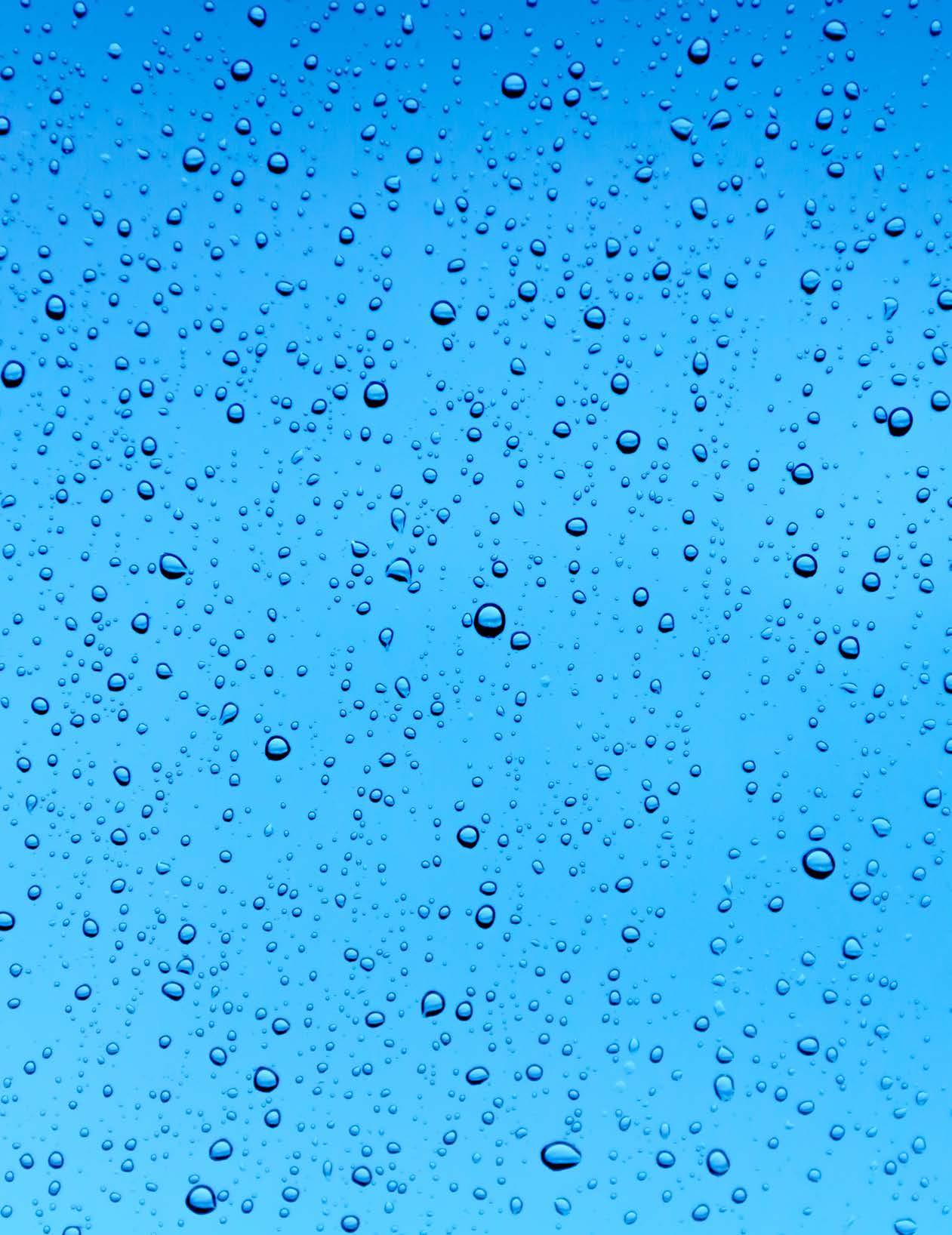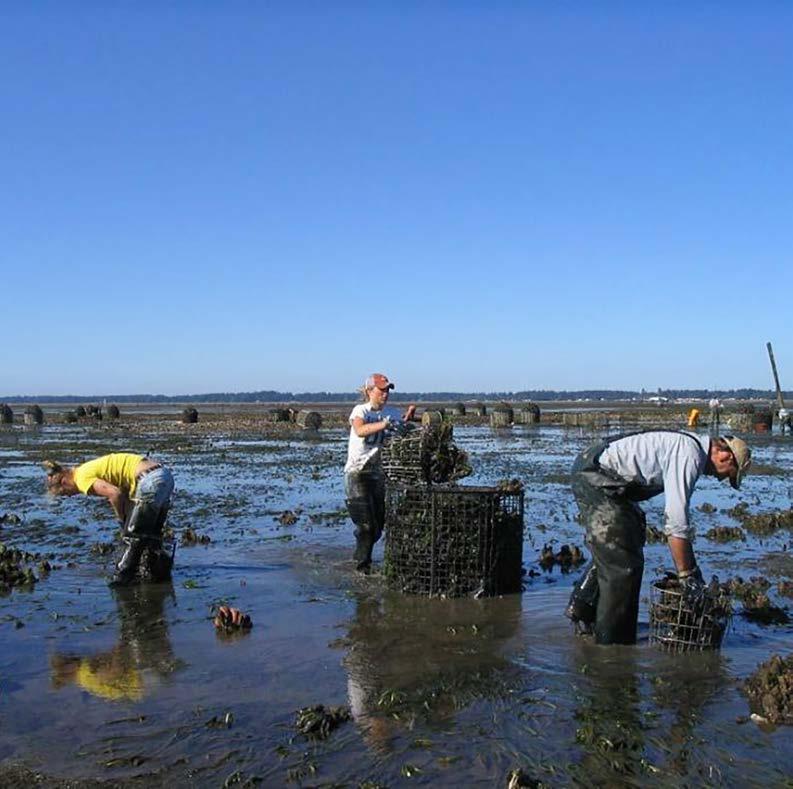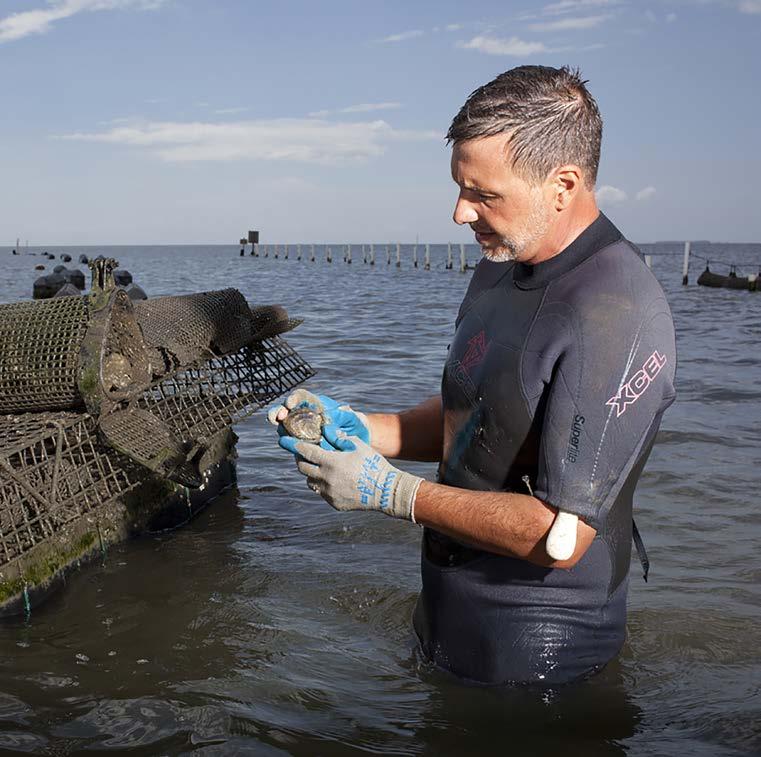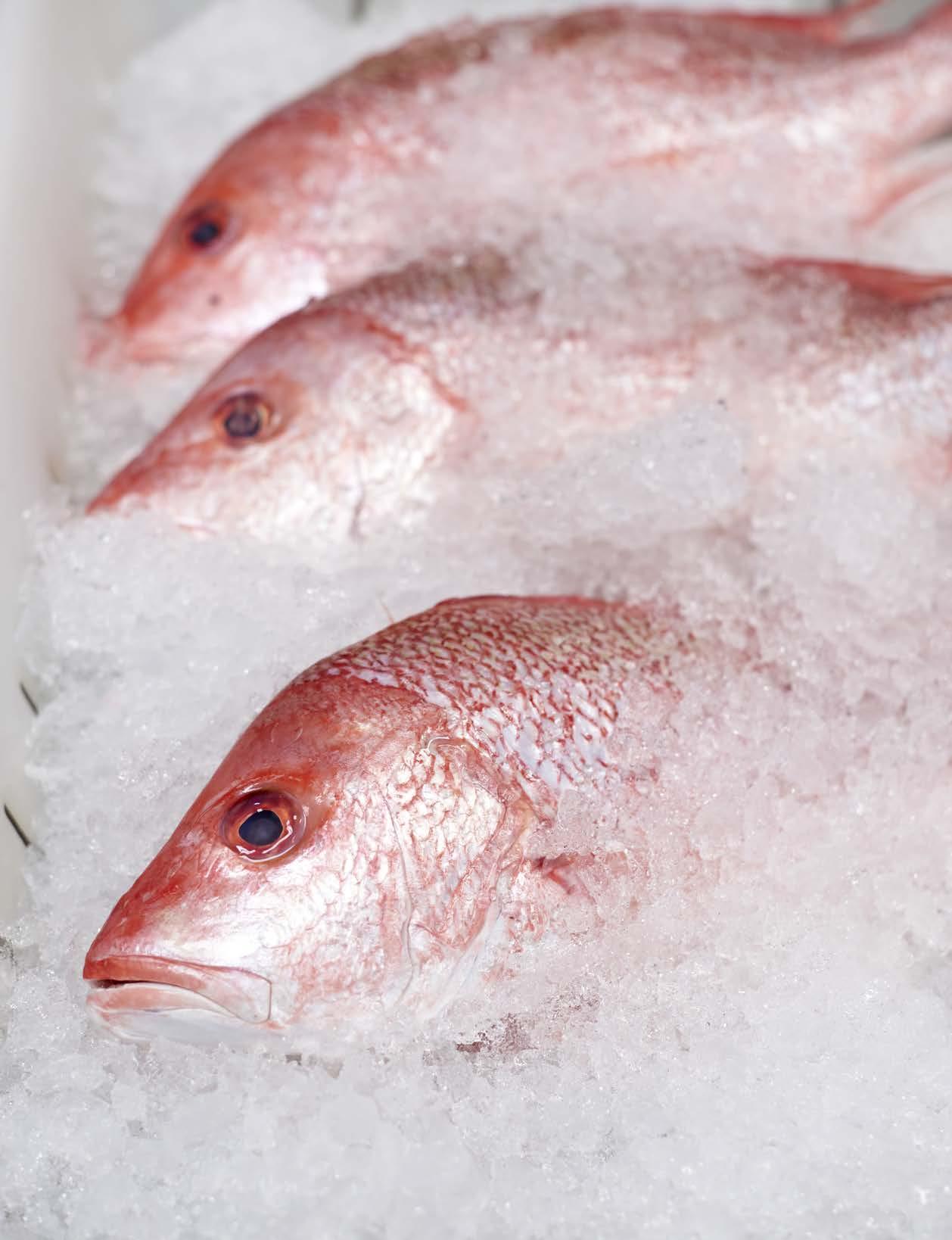AQUACULTURE
The Future of Water Farming

A conversation with Dr. Bill Walton, aka Dr. Oyster
Smart Catch: Reeling in Sustainable Seafood
The James Beard Foundation


A conversation with Dr. Bill Walton, aka Dr. Oyster
Smart Catch: Reeling in Sustainable Seafood
The James Beard Foundation
“By importing so much of our seafood, we are also missing out on the benefits of local production and on domestic job creation, especially in rural communities such as coastal fishing towns and agricultural regions that produce aquaculture feed ingredients like fish processing trimmings, grains, and algae.”
- Michael Rubino, director of NOAA Fisheries’ Aquaculture Office
National Oceanic and Atmospheric Administration
Vision: A robust U.S. marine aquaculture sector that creates jobs, provides sustainable seafood, and supports healthy oceans
Mission: To provide science, services, and policies to support the significant expansion and sustainability of U.S. marine aquaculture.
Aquaculture—also known as fish or shellfish farming—refers to the breeding, rearing, and harvesting of plants and animals in all types of water environments including ponds, rivers, lakes, and the ocean. Researchers and aquaculture producers are “farming” all kinds of freshwater and marine species of fish, shellfish, and plants. Aquaculture produces food fish, sport fish, bait fish, ornamental fish, crustaceans, mollusks, algae, sea vegetables, and fish eggs. Marine aquaculture refers to the culturing of species that live in the ocean. U.S. marine aquaculture primarily produces oysters, clams, mussels, shrimp, and salmon as well as lesser amounts of cod, moi, yellowtail, barramundi, sea bass, and sea bream. Marine aquaculture can take place in the ocean (that is, in cages, on the seafloor, or suspended in the water column) or in on-land, manmade systems such as ponds or tanks. Recirculating aquaculture systems that reduce, reuse, and recycle water and waste can support some marine species.

Thank you for working with us to get a national conversation on seafood farming going in the right direction and challenge common misperceptions that linger from days of old. With roughly 30 years of best practices behind us and continual work toward improvement, seafood farming creates jobs while helping our nation meet a growing demand for food in healthy and environmentally safe ways. I applaud your drive to get the story right.
> Jennie Lyons, NOAA Spokesperson
NOAA is an agency that enriches life through science. Our reach goes from the surface of the sun to the depths of the ocean floor as we work to keep citizens informed of the changing environment around them. From daily weather forecasts, severe storm warnings, and climate monitoring to fisheries management, coastal restoration, and supporting marine commerce, NOAA’s products and services support economic vitality and affect more than one third of America’s gross domestic product. NOAA’s dedicated scientists use cuttingedge research and high-tech instrumentation to provide citizens, planners, emergency managers, and other decision makers with reliable information they need when they need it.
NOAA Fisheries is responsible for the stewardship of the nation’s ocean resources and their habitat. We provide vital services for the nation: productive and sustainable fisheries, safe sources of seafood, the recovery and conservation of protected resources, and healthy ecosystems—all backed by sound science and an ecosystem-based approach to management. fisheries.noaa.gov
Freshwater aquaculture refers to the farming and culturing of species that live in fresh water. These species include catfish, trout, tilapia, and striped bass as well as non-food fish like baitfish and ornamental fish. These species are produced in raceways, ponds, cages, and tanks.
In 2014, U.S. aquaculture produced a substantial $1.3 billion annually which accounted for 20 percent of total U.S. seafood production and fishery products by value. Still, we lag behind much of the world and import between 80-90 percent of our seafood. Expanding aquaculture is a way America can address the $13 billion commercial seafood trade deficit. In addition to closing the deficit, aquaculture would generate tens of thousands of new jobs on America’s waterfronts. Aquaculture can provide a year-round source of livingwage jobs and economic opportunities that supplement seasonal tourism and commercial fishing. The industry also creates diverse types of jobs in other sectors, such as seafood processing, equipment manufacturing, marketing, agriculture, and food services.
Top right: NOAA scientists are developing better tools to provide early and accurate warnings to the risks of a harmful algal bloom or bacterial outbreak affecting shellfish. Such forecasts can help managers protect the West Coast's valuable shellfish resources as well as human and ecosystem health. Photo by Bill Dewey at Taylor Shellfish Farm, Shelton, Washington. Photo courtesy of NOAA Fisheries.


Seafood is a healthy, low-calorie protein with unique qualities that give it health benefits that no other food provides. The U.S. dietary guidelines recommend that Americans double their seafood consumption to receive maximum health benefits. This amount is more seafood than wild caught fisheries can supply. It must come from aquaculture.
I grew up thinking I wanted to be a marine biologist and was lucky enough to have that happen. As I went through school, though, I discovered that I really loved working with fishermen and resource managers and “putting the science to work.” After graduate school, I worked as a shellfish constable in Wellfleet, Massachusetts, before becoming an extension agent with Cape Cod Cooperative Extension and Woods Hole Sea Grant. I also ran a small oyster farm with my wife out in Cape Cod Bay in Eastham, Massachusetts. I moved down to the beautiful Gulf Coast to begin my work with Auburn University in 2009, where I’m lucky enough to do very similar work. In my free time, I serve on the board of Oyster South, a nonprofit dedicated to supporting the oyster aquaculture community across the Southern U.S. My wife and I also have a small oyster bar catering business on the side, called The Wandering Oyster: “Have shucking knife, will travel.”

For more than 10 years scientists at the Auburn University Shellfish Laboratory have conducted research impacting the oyster industry, but that’s not all. We have been working with residents along the coast to help them start off bottom oyster farming, trying to get the most beautiful oyster and best-tasting oyster to market that they can. Some of what makes one farm’s oyster different from another’s is where it was grown (the salinity, the minerals in the water, etc.), but a big part of it is what choices the farmer makes (which gear, how often they handle the oysters, etc.). That affects the cup and the fan of the oyster, how clean the shell is, and how full the meat is. All of that matters when you’re trying to compete on the ice at a really nice raw bar. One challenge for a farmer is finding cost-effective ways to produce beautiful, great-tasting oysters.
The James Beard Foundation, one of the country’s most prominent culinary institutions, is taking on the sustainability of the world’s seafood supply—starting with the menus from some of America’s favorite chefs.
The idea for Smart Catch is simple and powerful: the program provides training and support to chefs so they can serve seafood fished or farmed in environmentally responsible ways. And consumers have a simple way to identify and support their restaurants. With more than 90 percent of the world's fisheries either fully fished or overfished, preserving marine life to assure stable fishing stocks and promoting sustainably farmed options is more important than ever.
“Chefs have the influence to educate our palates and our views,” said Susan Ungaro, president of the James Beard Foundation. “Through Smart Catch, they are becoming new environmental heroes, as they use their influence to lead industry efforts to maintain healthy, sustainable food sources both now and for future generations.”
Smart Catch works to increase the amount of sustainable seafood sold through U.S. restaurants by addressing the many barriers to getting sustainable seafood on a diner’s plate—from reliable sources to chef training and consumer awareness. The program also seeks to engage the chef community in efforts to improve seafood production both domestically and abroad.
Chefs who commit to serve more than 80 percent sustainable seafood on their menus earn the Smart Catch emblem for their restaurants. Those who achieve more than 80 percent receive designation as a Smart Catch Leader. All Smart Catch restaurants are provided with menu consultations, staff training materials, up-

to-date online sustainability assessments powered by FishChoice. com, marketing support, and guidance in working with their suppliers so they can make smart, environmentally responsible seafood choices.
Smart Catch's sustainability criteria uses data from Monterey Bay Aquarium’s Seafood Watch Program and the NOAA Fish Stock Sustainability Index. The criteria is based on wild and farmed seafood production and includes the health and abundance of fish stocks and impacts on the surrounding environment.
Developed by Microsoft co-founder and philanthropist Paul G. Allen to make change on the water, Smart Catch piloted in Seattle in 2015 with almost 50 local chefs representing 80 Seattle restaurants taking part, including Renee Erickson, Ethan Stowell, Tom Douglas, Thierry Rautureau, and Brendan McGill.
“The future of the world’s oceans depends on all of us choosing sustainable seafood,” said James Deutsch, conservation director for Paul Allen. “James Beard Foundation’s announcement of the national rollout of Smart Catch represents a giant step in that direction. We couldn’t be more proud of the continued growth of this pioneering program we piloted in Seattle.”
The new national pilot is one of James Beard Foundation’s Impact Programs, which aim to establish a more sustainable food system through education, advocacy, and thought leadership. In addition to running Smart Catch, the historic James Beard House will also become a Smart Catch participant. h

In June 2017 at the SeaWeb Seafood Summit in Seattle, the James Beard Foundation (JBF) announced the national launch of Smart Catch—a program created by chefs for chefs with the purpose of increasing the sustainability of the seafood supply chain. More than 60 chefs representing more than 100 restaurants have already committed to the program, including a number of James Beard Award nominees and winners, such as
• Mario Batali’s Batali and Bastianich Hospitality group of restaurants
• Michael Cimarusti’s Providence in Los Angeles
• Renee Erickson’s Seattle restaurants
• Mary Sue Milliken and Susan Feniger’s Border Grill restaurants in Los Angeles and Las Vegas
• Bill Telepan’s Oceana in New York City
• Ryan Prewitt’s Pesche in New Orleans
• Hari Pulapaka’s Cress in Deland, Florida
The James Beard Foundation’s mission is to celebrate, nurture, and honor chefs and other leaders making America’s food culture more delicious, diverse, and sustainable for everyone.
Founded in 1986, the James Beard Foundation celebrates, nurtures, and honors chefs and other leaders making America's food culture more delicious, diverse, and sustainable for everyone. The organization administers a number of diverse programs that include educational initiatives, food industry awards, scholarships for culinary students, publications, chef advocacy training, and thought-leader convening. The Foundation also maintains the historic James Beard House in New York City’s Greenwich Village as a “performance space” for visiting chefs.
• Scott Simpson’s The Depot in Auburn, Alabama jamesbeard.org
